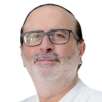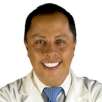Memphis, TN, USA: Dr Franklin Garcia-Godoy, one of the main investigators in the United States and up to now assistant dean for research in restorative dentistry and pediatric dentistry at Nova Southeastern University in Ft. Lauderdale, FL, USA, has been named senior executive dean for dental research at the University of Tennessee in Memphis.
Dr Garcia-Godoy, who is the editor of the American Journal of Dentistry and an advisor to the National Institute of Dental and Craniofacial Diseases (NIDCR), said the new position is a big challenge. He expects to do research on many issues, among them biological materials, and ethnic and racial disparities in dental care in the United States.
Dr Garcia-Godoy gave a presentation at the IADR 87th Session in Miami, FL, USA, on “Current Aspects on Adhesion,” which he said “is not necessarily related to the bonding, but where do I think we should go, which is towards more biological adhesives.”
“I think adhesives should be more biological-accepted,” said Dr Garcia-Godoy. “Right now, they are more of a mechanical issue. What I’m trying to do is a more biological adhesive, take advantage of the tissue itself to increase the bonding structure”.
Spiders as models
“We copied adhesives in dentistry from carpentry,” the researcher said, “but we are dealing with biological tissue. We should copy from animals such as spiders that develop natural adhesives.”
Born in Dominican Republic and educated in his native country and in the United States, the researcher said his team has been studying the common spider and have been able to develop a similar adhesive to the one it uses to build spider-webs.
“We have been studying also the crabs, which develop a hard compound for their shells,” he said. “We can develop it from there, which is a protein that if it fractures it can regenerate itself. That’s the direction I’m trying to go.”
Dr Garcia-Godoy said that he couldn’t mention many details about his research as of yet since many of them are still pending patents.
“We are also dealing with calcium phosphates and remineralization of teeth, and also on varnishes and how does the materials work for the color,” he concluded.
Resources
iadr.confex.com/iadr/2009miami/webprogram/Paper116426.html
Many have now accepted The Myobrace System is peerless in terms of the potential to cajole the orofacial muscles into widening arches and allowing good ...
The advent of human bone grafting has led to applications within the specialties of dental and sinus reconstructive surgery for corrections to maladies such...
The advent of human bone grafting has led to applications within the specialties of dental and sinus reconstructive surgery for corrections to maladies such...
BOSTON, USA: BeautiBond is a seventh-generation adhesive developed by Shofu. The product contains two powerful monomers — one for the dentin and one ...
DETROIT, Mich., USA: Dentistry as a profession is always changing, adapting and thriving, and there is no better place to celebrate that nature than here in...
Fifty years ago, Apollo 11, after a computer-guided voyage of 250,000 miles, orbited the moon. Neil Armstrong, avoiding house-sized boulders and dangerously...
For almost the entire history of orthodontics, the bonding process has been a “given.” It’s a long and variable-filled process, including ...
Miami, FL, USA: Peruvian doctors Gilberto and Natalia Henostroza presented two research papers on self-adhesive composite cements at the recent Congress of ...
The toothbrush is an essential tool that is used for the care of our teeth. Have you ever missed brushing your teeth for one day? Have you ever considered ...
CHICAGO, IL, USA: BeautiBond is a seventh-generation adhesive developed by Shofu. According to the company, it contains two powerful monomers—one for ...
Live webinar
Thu. 18 April 2024
11:00 AM EST (New York)
Live webinar
Mon. 22 April 2024
10:00 AM EST (New York)
Prof. Dr. Erdem Kilic, Prof. Dr. Kerem Kilic
Live webinar
Tue. 23 April 2024
1:00 PM EST (New York)
Live webinar
Wed. 24 April 2024
8:00 AM EST (New York)
Dr. Yin Ci Lee BDS (PIDC), MFDS RCS, DClinDent Prosthodontics, Dr. Ghida Lawand BDS, MSc, Dr. Oon Take Yeoh, Dr. Edward Chaoho Chien DDS, DScD
Live webinar
Wed. 24 April 2024
1:00 PM EST (New York)
Live webinar
Thu. 25 April 2024
12:00 PM EST (New York)
Dra. Deborah Martinez LaForest, Dra. Macjorette Larez, Dr. Francisco Castellanos Medina, Dr. Francisco Eraso
Live webinar
Fri. 26 April 2024
12:00 PM EST (New York)



 Austria / Österreich
Austria / Österreich
 Bosnia and Herzegovina / Босна и Херцеговина
Bosnia and Herzegovina / Босна и Херцеговина
 Bulgaria / България
Bulgaria / България
 Croatia / Hrvatska
Croatia / Hrvatska
 Czech Republic & Slovakia / Česká republika & Slovensko
Czech Republic & Slovakia / Česká republika & Slovensko
 Finland / Suomi
Finland / Suomi
 France / France
France / France
 Germany / Deutschland
Germany / Deutschland
 Greece / ΕΛΛΑΔΑ
Greece / ΕΛΛΑΔΑ
 Italy / Italia
Italy / Italia
 Netherlands / Nederland
Netherlands / Nederland
 Nordic / Nordic
Nordic / Nordic
 Poland / Polska
Poland / Polska
 Portugal / Portugal
Portugal / Portugal
 Romania & Moldova / România & Moldova
Romania & Moldova / România & Moldova
 Slovenia / Slovenija
Slovenia / Slovenija
 Serbia & Montenegro / Србија и Црна Гора
Serbia & Montenegro / Србија и Црна Гора
 Spain / España
Spain / España
 Switzerland / Schweiz
Switzerland / Schweiz
 Turkey / Türkiye
Turkey / Türkiye
 UK & Ireland / UK & Ireland
UK & Ireland / UK & Ireland
 International / International
International / International
 Brazil / Brasil
Brazil / Brasil
 Canada / Canada
Canada / Canada
 Latin America / Latinoamérica
Latin America / Latinoamérica
 China / 中国
China / 中国
 India / भारत गणराज्य
India / भारत गणराज्य
 Japan / 日本
Japan / 日本
 Pakistan / Pākistān
Pakistan / Pākistān
 Vietnam / Việt Nam
Vietnam / Việt Nam
 ASEAN / ASEAN
ASEAN / ASEAN
 Israel / מְדִינַת יִשְׂרָאֵל
Israel / מְדִינַת יִשְׂרָאֵל
 Algeria, Morocco & Tunisia / الجزائر والمغرب وتونس
Algeria, Morocco & Tunisia / الجزائر والمغرب وتونس
 Middle East / Middle East
Middle East / Middle East
:sharpen(level=0):output(format=jpeg)/up/dt/2024/04/Study-points-to-lack-of-formal-education-on-cannabis-in-dentistry.jpg)
:sharpen(level=0):output(format=jpeg)/up/dt/2024/04/Immediate-full-arch-zirconia-implant-therapy-utilising-the-power-of-robotic-assistance-and-digital-scanning_Fig-1-preophoto_title.jpg)
:sharpen(level=0):output(format=jpeg)/up/dt/2024/04/Lowcost-tooth-sensitivity-liquid-found-to-combat-caries-1.jpg)
:sharpen(level=0):output(format=jpeg)/up/dt/2024/04/DS-Academy-launches-Indirect-Restorative-Course-Series.jpg)
:sharpen(level=0):output(format=jpeg)/up/dt/2024/03/The-fight-continues-for-anaesthesia-safety-in-dentistry.jpg)











:sharpen(level=0):output(format=png)/up/dt/2022/10/DMP-logo-2020_end.png)
:sharpen(level=0):output(format=png)/up/dt/2014/02/3shape.png)
:sharpen(level=0):output(format=png)/up/dt/2023/07/DirectaDentalGroup_Logo_2023_03_2lines_lowres.png)
:sharpen(level=0):output(format=png)/up/dt/2011/07/fdi.png)
:sharpen(level=0):output(format=png)/up/dt/2024/01/ClearCorrect_Logo_Grey_01-2024.png)
:sharpen(level=0):output(format=jpeg)/up/dt/e-papers/330729/1.jpg)
:sharpen(level=0):output(format=jpeg)/up/dt/e-papers/330727/1.jpg)
:sharpen(level=0):output(format=jpeg)/up/dt/e-papers/330725/1.jpg)
:sharpen(level=0):output(format=jpeg)/up/dt/e-papers/325039/1.jpg)
:sharpen(level=0):output(format=jpeg)/up/dt/e-papers/325007/1.jpg)
:sharpen(level=0):output(format=jpeg)/up/dt/e-papers/313543/1.jpg)
:sharpen(level=0):output(format=jpeg)/up/dt/2017/01/3935f3aa7c2e523be4e240b25ee266ee.jpg)

:sharpen(level=0):output(format=jpeg)/up/dt/2024/04/Study-points-to-lack-of-formal-education-on-cannabis-in-dentistry.jpg)
:sharpen(level=0):output(format=gif)/wp-content/themes/dt/images/no-user.gif)
:sharpen(level=0):output(format=jpeg)/up/dt/2017/01/257ea82fc098645a8bebef981d95913d.jpg)
:sharpen(level=0):output(format=jpeg)/up/dt/2017/01/c17c9dcd78e86877793a789095bf14ae.jpg)
:sharpen(level=0):output(format=jpeg)/up/dt/2010/10/4fbc464645c1b7fcff4f9a17c46c717e.jpg)
:sharpen(level=0):output(format=jpeg)/up/dt/2010/02/924a808e42422489fa2b9158e2354616.jpg)
:sharpen(level=0):output(format=jpeg)/up/dt/2017/01/8e2c8ff39dbe174b8ba938f640c42d8c.jpg)
:sharpen(level=0):output(format=jpeg)/up/dt/2022/04/00_Claro.jpg)
:sharpen(level=0):output(format=jpeg)/up/dt/2017/01/6a8066bd0056d8dea073b00b15befd97.jpg)
:sharpen(level=0):output(format=jpeg)/up/dt/2017/01/d0d103f30dcd7170d3067d2ded130d19.jpg)
:sharpen(level=0):output(format=jpeg)/up/dt/2011/03/40b61fa220bd7b21e3cba66219ffaa9c.jpg)
:sharpen(level=0):output(format=jpeg)/up/dt/2017/01/4a1e6c70e0ab8e5cb383988865631b44.jpg)







:sharpen(level=0):output(format=jpeg)/up/dt/2024/04/Study-points-to-lack-of-formal-education-on-cannabis-in-dentistry.jpg)
:sharpen(level=0):output(format=jpeg)/up/dt/2024/04/Immediate-full-arch-zirconia-implant-therapy-utilising-the-power-of-robotic-assistance-and-digital-scanning_Fig-1-preophoto_title.jpg)
:sharpen(level=0):output(format=jpeg)/up/dt/2024/04/Lowcost-tooth-sensitivity-liquid-found-to-combat-caries-1.jpg)
:sharpen(level=0):output(format=jpeg)/up/dt/e-papers/330727/1.jpg)
:sharpen(level=0):output(format=jpeg)/up/dt/e-papers/330725/1.jpg)
:sharpen(level=0):output(format=jpeg)/up/dt/e-papers/325039/1.jpg)
:sharpen(level=0):output(format=jpeg)/up/dt/e-papers/325007/1.jpg)
:sharpen(level=0):output(format=jpeg)/up/dt/e-papers/313543/1.jpg)
:sharpen(level=0):output(format=jpeg)/up/dt/e-papers/330729/1.jpg)
:sharpen(level=0):output(format=jpeg)/up/dt/e-papers/330729/2.jpg)
:sharpen(level=0):output(format=jpeg)/wp-content/themes/dt/images/3dprinting-banner.jpg)
:sharpen(level=0):output(format=jpeg)/wp-content/themes/dt/images/aligners-banner.jpg)
:sharpen(level=0):output(format=jpeg)/wp-content/themes/dt/images/covid-banner.jpg)
:sharpen(level=0):output(format=jpeg)/wp-content/themes/dt/images/roots-banner-2024.jpg)
To post a reply please login or register